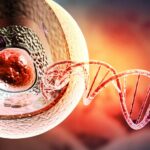Whether you need help designing your first CRISPR experiment, you’re looking for troubleshooting tips, or you want to learn about how to apply CRISPR in your research, the CRISPR Research Hub has something for you.
CRISPR is best known as the gene-editing tool that allows you to easily and precisely edit DNA both in vitro and in vivo.
However, CRISPR technology has evolved beyond basic gene editing, with the development of tools and techniques that allow you to edit the epigenome or even activate or inhibit gene expression without altering the underlying DNA sequence of your target gene.
There’s so much information available on CRISPR that it can feel overwhelming. No matter what you want to do with CRISPR, our carefully crafted resources allow you to find and digest the information you need.
CRISPR Explained
How does CRISPR gene editing work?
If you are new to performing CRISPR or if you want to refresh your background knowledge on how CRISPR gene editing works, this is the section for you. You can discover the history and learn the components of this gene-editing system, from protospacer-adjacent motifs (PAMs) to guide RNA (gRNA). If you are unsure if CRISPR is the right gene-editing system for your experiments, you can compare it with other gene-editing systems, including zinc finger nucleases (ZFNs) and transcription activator-like effector nucleases (TALENs).
Learn how the CRISPR prokaryote immune response systems were first discovered and the development of the CRISPR-Cas9 gene-editing tool.
Grab an overview of CRISPR technology from its roots as a bacterial defense system to how it can be utilized in health and research.
While CRISPR offers vast applications in disease research and drug target identification, it’s not always the optimal choice for every scenario. Explore the main advantages and challenges of using CRISPR-Cas9 to determine if it’s the right fit for your project.
CRISPR Resources
Gene Editing 101 eBook
CRISPR Unedited Podcast
Hosted by Dr Antony Adamson (The University of Manchester), the ‘CRISPR Unedited’ podcast brings together researchers from around the world to share their practical knowledge on CRISPR to help you get the most out of your research. This set of engaging, fun, and energetic conversations serves to highlight the latest and upcoming CRISPR technologies, and provide helpful advice no matter where you are in your CRISPR journey.
Watch CRISPR-Related Webinars
Design, Develop, Deliver and Detect – the 4 D’s of CRISPR gene editing
CRISPRi as an alternative to CRISPR-cut in human iPSC and their differentiated progeny
Base editing in practice
Precise, high-efficiency editing of stem cells to probe human biology and model disease
Advanced CRISPR
CRISPR isn’t just about DNA editing. Discover how you can use Cas13 proteins in your research to knock down, modify or track RNAs in mammalian cells.
Find out how modified variants of CRISPR nucleases provide gene editing with reduced off-target effects and can even control gene expression without altering the DNA sequence.
Find out how CRISPR-mediated gene activation (CRISPRa) and repression (CRISPRi) work and why you should consider using them in addition to your CRISPR knockouts.
Want to do some epigenome editing? Discover the usefulness of catalytically inactive (dead) Cas9.
CRISPR Applications
Discover Various Applications of CRISPR
Do you have a specific application of CRISPR in mind, and are looking for help and guidance? Discover the various ways this technology is used in research and get inside tips on how to use it in specific applications, such as performing CRISPR experiments in hard-to-transfect cells like T cells We also uncover what you need to know to scale up to CRISPR screens.
If you need a multi-gene knockout or large-scale genomic modification, or want reduced off-target effects, then multiplex CRISPR is for you!
Discover how CRISPR can be scaled up for drug screening applications.
T cells can be tricky to engineer with CRISPR. Find out the key considerations when editing these cells and how you can overcome any associated challenges.
Get tips and tricks for performing CRISPR-Cas9 editing in Drosophila.
Contact us
Got a Question or a Suggestion?
Didn’t find what you were looking for? Or perhaps you have some CRISPR tips and tricks that we haven’t covered here? Get in touch and let us know so we can continue to improve the information we share!
Experimental Design
Tips and Tricks for Setting up Your CRISPR Experiments
Are you ready to get started with CRISPR in your lab? This section takes you through all aspects of CRISPR experimental design and setup, from designing gRNAs to choosing the right method for delivering CRISPR reagents. We also cover the various delivery formats, including DNA, plasmids, and ribonucleoprotein (RNP) complexes, and advise you on how to choose the right delivery format for your experiment.
Discover how to get started with CRISPR gene editing in your experiments with our key considerations.
Confused about CRISPR nucleases? Read this guide to discover the various CRISPR nucleases available and what they are best suited for.
Designing a CRISPR experiment can be daunting. We’ve got tips and pointers to help you get off on the right foot.
Read up on the various methods for delivering CRISPR reagents and how to choose between them.
Get some ideas on what CRISPR can do for you and what using it involves.
Troubleshooting
Troubleshooting Help for When CRISPR Goes Wrong
If things keep going wrong in your experiments, or you’ve got results you can’t explain don’t panic. We’ve got guides to walk you through how to troubleshoot your CRISPR experiment, including what controls you need to use to ensure you can effectively troubleshoot, and how to interpret confusing results.
Discover how to validate your CRISPR gene editing, from the successful delivery of CRISPR reagents to the confirmation of desired genetic and phenotype changes.
Level-up your troubleshooting ability by determining the success of failure of each stage of your CRISPR experiment.
Latest CRISPR articles
Keep Up-to-date with the Latest CRISPR Articles
T cells can be tricky to engineer with CRISPR. Find out the key considerations when editing these cells and how you can overcome any associated challenges.
While CRISPR offers vast applications in disease research and drug target identification, it’s not always the optimal choice for every scenario. Explore the main advantages and challenges of using CRISPR-Cas9 to determine if it’s the right fit for your project.
Learn how the CRISPR prokaryote immune response systems were first discovered and the development of the CRISPR-Cas9 gene-editing tool.
Investigating human diseases and genetic variation is complex, but CRISPR-edited induced pluripotent stem cells present a promising alternative to immortalized cell lines. This article delves into genome editing principles and offers practical steps for optimizing research techniques, ensuring more accurate and ethical studies.
Designing Cas13 gRNAs is a bit different from the standard Cas9. Read this guide to learn how it differs, and get a step-by-step guide on designing the perfect Cas13 gRNAs.
CRISPR isn’t just about DNA editing. Discover how you can use Cas13 proteins in your research to knock down, modify or track RNAs in mammalian cells.
If you need a multi-gene knockout or large-scale genomic modification, or want reduced off-target effects, then multiplex CRISPR is for you!
Discover two CRISPR-based viral diagnostic strategies, DETECTR and SHERLOCK.
CRISPR Terminology
Glossary of CRISPR Terminology
Is there a CRISPR term you’re not quite sure about? We’ve compiled a glossary of CRISPR terminology to help you out. Just click on the term to see the definition.


























